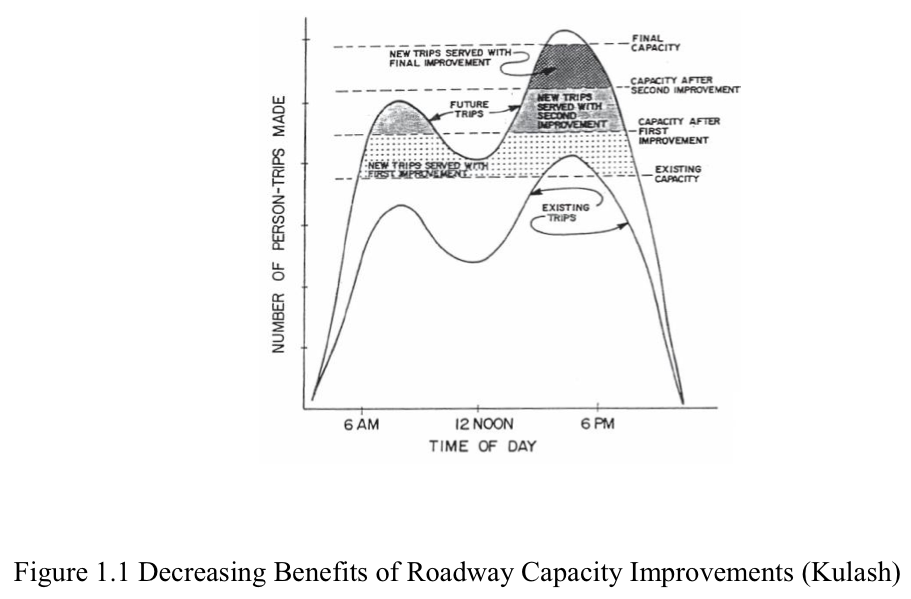FLORIDA DEPARTMENT OF TRANSPORTATION: SYSTEMS PLANNING OFFICE
Background
Growth management has attempted to manage the pace of development while providing or improving transportation services to the users of the transportation system. However, these efforts have largely focused on automobile travelers. The majority of the statutory rules, measurements, management strategies and accountability have been framed in terms of passenger vehicle trips. Furthermore, the primary evaluation tool for growth management has been the Level of Service (LOS) concept, which has traditionally assessed the quality of service for passenger vehicles. A handful of communities have attempted to rigorously integrate and support all modes of travel and the movement of people, not just vehicles, within the project review processes. However, the topic is often approached as an afterthought to a vehicular analysis rather than an integrated and coordinated evaluation of viable mobility options.
Continuing this vehicular focus is no longer feasible, for three main reasons. First, most local governments have limited funding to expand their roadway network consistent with projected growth. Second, many local governments depend on new growth as a revenue source, but most development companies are equally strapped for funds, and private financing is extremely limited. Third, vehicular congestion becomes an issue for most communities long before they build out fully. Ironically, it is the congestion itself that attracts commercial development because of the increased visibility that a congested road provides.
In the past, the immediate reaction to congestion was to increase vehicular capacity on the congested roadway. However, this approach has often proven counterproductive, primarily because this new capacity is often consumed by trips relocating from other routes, rescheduling from other times or shifting from other, less attractive, modes1. Although each capacity improvement serves proportionally fewer drivers (see Figure 1.12), each improvement also becomes significantly more expensive than the last, both financially and socially. The increase in financial cost typically stems from right-of-way acquisition to support additional pavement and drainage, while social costs may relate to lost or injured businesses that have previously framed the identity of the community. The construction often results in corridors that have a vehicle-oriented character and are unfriendly to pedestrians and bicyclists. This may permanently limit the corridor’s ability to serve all modes and support a high quality of life.
Read full report (PDF) here: Expanded Transportation Performance Measures
About the Florida Department of Transportation
www.dot.state.fl.us
“The department will provide a safe transportation system that ensures the mobility of people and goods, enhances economic prosperity and preserves the quality of our environment and communities.”







 RSS Feed
RSS Feed